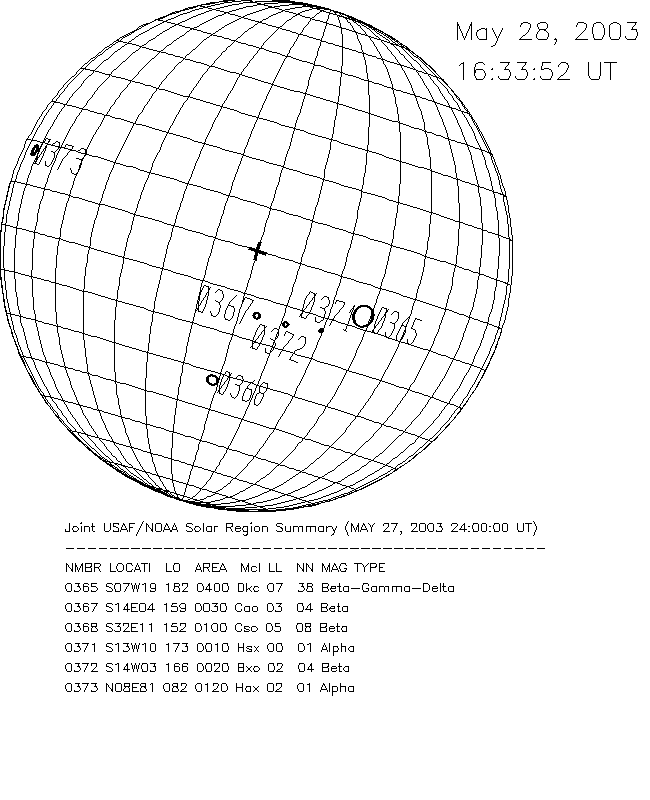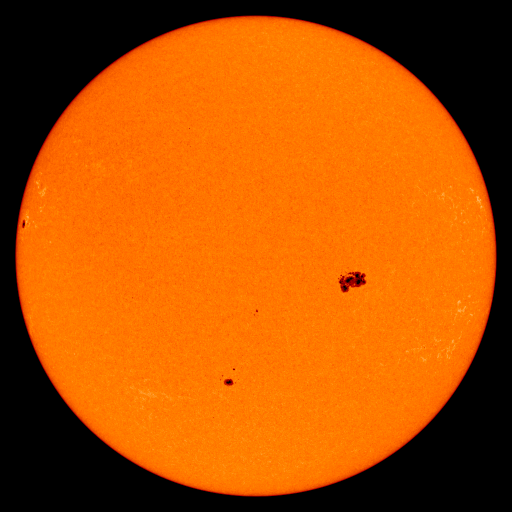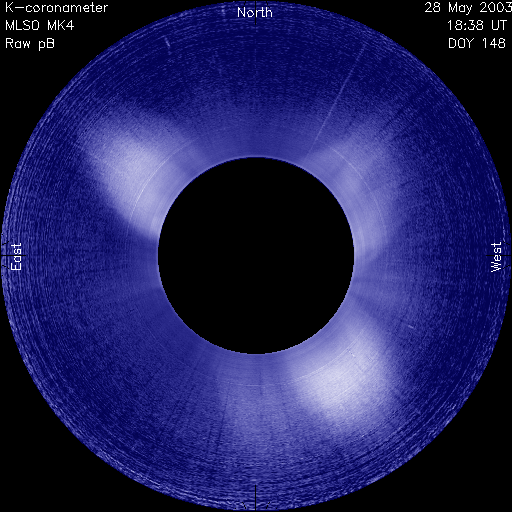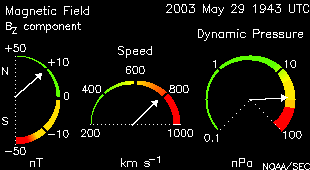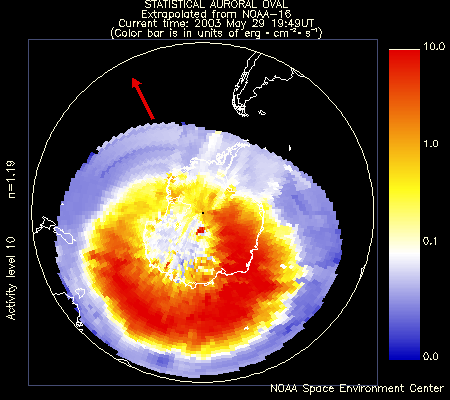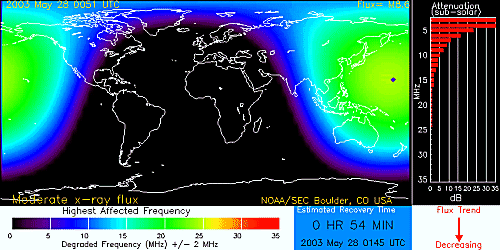X-Class Flares - 2 in a row! 2305Z May 27 saw the first, an X-Class Level X1. The second is on-going at this moment, peaking at 0031Z May 28 at X3.4 according to GOES readings. Radio Blackout is occuring. See more at http://prop.hfradio.org ... http://hfradio.org/donation.html THANK YOU! 73 de NW7US
28.05.2003: Comment from the SIDC (RWC-Belgium): The compact sunspot group Catania 18 (NOAA 0365) has continued its development and further augmented its flaring activity. It delivered a 'double whammy' consisting of two X-class solar flares, originating from different locations inside the group. The first flare (from the eastern side of the group) reached its X1.3 peak in X-rays at 23:07 UT yesterday, while the second (located slightly more to the west) measured X3.6 at 00:37 UT today. The magnetic structure of the region (exquisitely visible in high resolution MDI images) remains highly complex and dynamic, so more large flares are expected. This includes the possibility for a proton flare. Both observed X-flares, as well as some of the earlier M-flares were associated with Earth-directed coronal mass ejections. CME material is expected to reach Earth late in the UT day May 29. This will add to the already ongoing geomagnetic perturbations. Indeed, the Earth is currently under the influence of a high-speed solar wind stream (currently 700 km/s) from an equatorial coronal hole; a minor geomagnetic storm is in progress.
29.05.2003: Comment from the SIDC (RWC-Belgium): The >10MeV proton flux has increased to just above the event threshold level since the beginning of the UT day. This is undoubtedly related to the flaring activity from Catania sunspot group 18 (NOAA 0365), which produced another X-flare this morning. A stronger proton storm may follow if flaring activity from this region continues. In the mean time, the solar wind speed is gradually decreasing and geomagnetic conditions have gone down from minor storm level to active, but we expect later today the arrival of the first of a series of CMEs, which may again lead to geomagnetic storm conditions.
Sun Spots: 116 as of 28 May 2003 Updated 2003 May 29 1805 UTC for 28 May Flux: 130 | Ap: 34 | Kp: 6 (125 nT) Solar Wind: 776 km/s at 20.1 protons/cm3 On 2003 May 29 1938Z: Bz: 15.0 nT Bx: 12.4 nT | By: -3.5 nT | Total: 19.8 nT Most recent satellite polar pass: Centered on 05/29/2003 : 1820 UTC Aurora Activity Level was 10 at 1820 UTC visit noaa for latest. live aurora display X-ray Solar Flares: 6h max [C6][1930Z May29] 24h max [X1][0105Z May29]
Latest Solar Wind Values Created: 2003 May 29 1948 UTC Magnetic Field (Based on GSM coordinates) Plasma Speed, V : 810 km s-1 Density, n : 29.4 particles cm-3 Pressure, P : 32.3 nPa
SFI:138 frm 130 A:69 frm 34 K:8 frm 6 (330 nT) 2100 29 May Frcst: SWX next 24h:strong: G3 S1 R2 Obs: SWX last 24h:severe: G4 S2 R3 Flare: 6h hi:M2(1935Z May29) 24h hi:X1(0105Z May29) SSN: 116 (28 May 2003) Au: 10 S Wind: 782 km/s @ 31.6 protons/cm3 Global HF Propagation Conditions for 2000Z on 29 May, 2003 Low Latitude: Poor Mid Latitude: Poor Hi Latitude: Poor(PCA)
